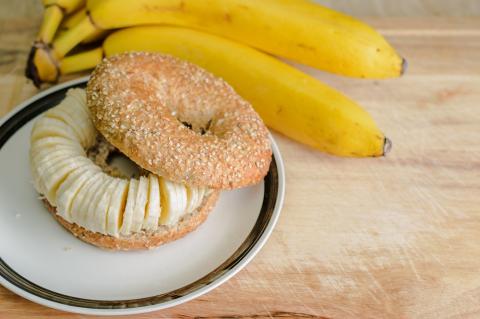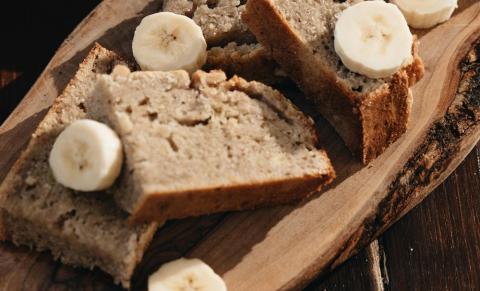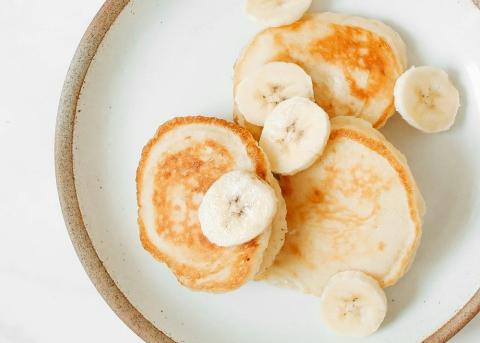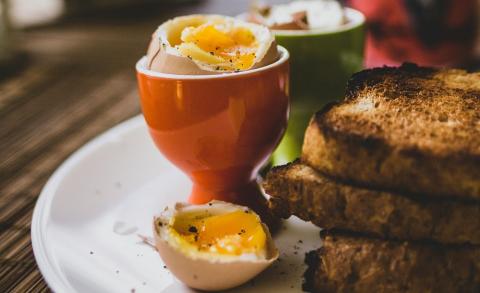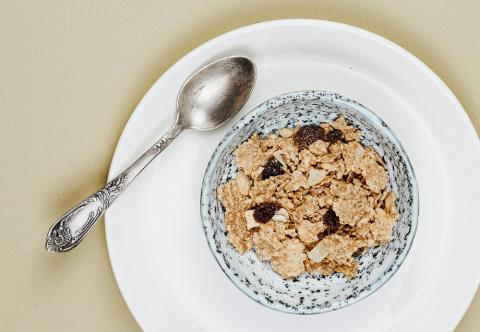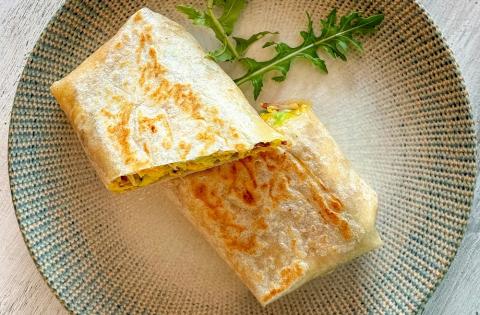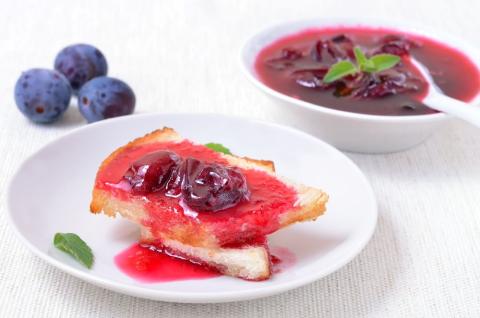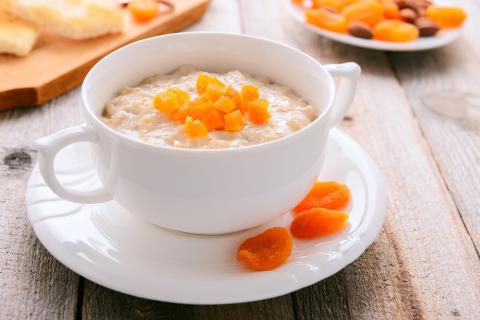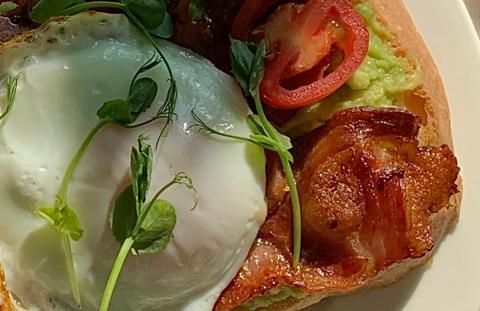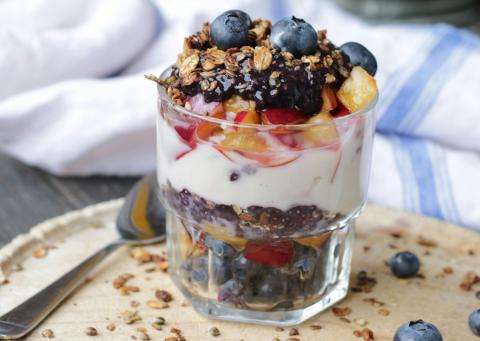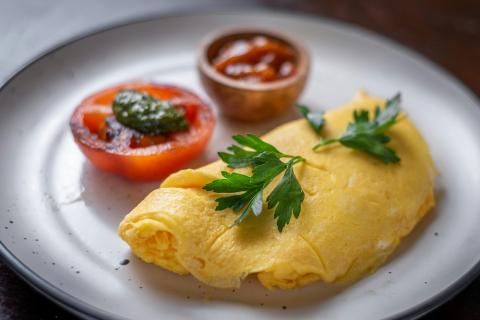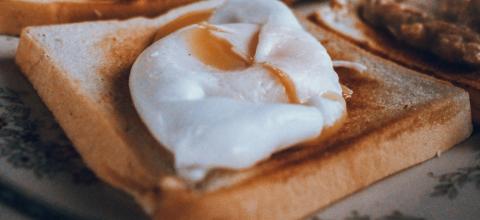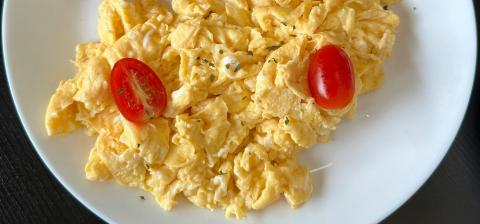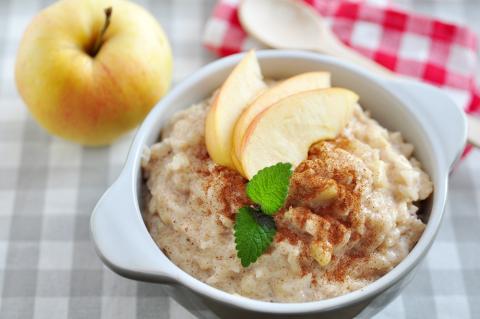- 6 Level Tablespoons (110g) Self-Raising Flour
- 1 Egg
- 8 Tablespoons (120ml) Semi-Skimmed Milk
- 1 Tablespoon (10g) Vegetable Oil
- 4 Teaspoons (20g) Low Fat Spread
Ingredients
Allergy Disclaimer
Always check the label of each ingredient for allergy warnings.
Method
- Crack the egg into a bowl and beat with a fork. Sieve the flour into the bowl and add the milk to make a thick batter.
- Grease a frying pan with the oil and heat until it is moderately hot.
- A spoonful at a time, drop the batter onto the frying pan. The pancakes should be a neat round shape. The batter should make 8 small pancakes.
- When the pancakes are covered with bubbles, slip a broad knife or spatula under them. If they are a golden brown colour underneath, turn and brown the other side. Turn once only.
- When cooked, wrap them in a clean tea-towel until cool, unless they are to be eaten hot.
- Spread with low fat spread and enjoy!
Time Saver Tips
Pancakes can be made in advance and eaten cold.
Tips for Kids
Children will enjoy watching the pancakes cook until they bubble. Pancakes can be eaten as breakfast or as a snack, served with fruit. To up the fibre content, try substituting half of the white flour with wholemeal flour.
Nutritional Information
Based on a single serving of 63g (% of an adult's reference intake)
Energy
166 kcals ( 8 %)
702 kJ ( 8 %)
Fat
1.3 g ( 7 %)
Saturates
23.7 g ( %)
Sugar
1.6 g ( 2 %)
Salt
0.1 g ( 2 %)
Detailed nutritional information
| Per 100g | Per 63g serving | |
|---|---|---|
| Energy Kcals | 264 | 166 |
| Energy Kj | 1,114 | 702 |
| Protein | 8.1 g | 5.1 g |
| Total Fat | g | g |
| Saturated Fat | 2.1 g | 1.3 g |
| Carbohydrates | 37.7 g | 23.7 g |
| Total Sugars | 2.6 g | 1.6 g |
| NSP Fibre | 1.7 g | 1.1 g |
| Sodium | 90 mg | 57 mg |
| Salt | 0.2 g | 0.1 g |
Find out about nutritional labelling
Nutrition labels on the front of packaging
- Most of the big supermarkets and many food manufacturers display nutritional information on the front of pre-packed food.
- Front of pack nutrition labels provide information on the number of grams of fat, saturated fat, sugars and salt and the amount of energy (in kJ and kcal) in a serving or portion of a recipe.
- The labels also include information about reference intakes (expressed as a percentage) which are guidelines about the approximate amount of particular nutrients and energy required for a healthy diet.
- The colour coding tells you at a glance if the food has high (red), medium (amber) or low (green) amounts of fat, saturated fat, sugars and salt.
- The more greens on the label, the healthier the choice
- Amber means neither high nor low, so you can eat foods with all or mostly ambers on the label most of the time.
- Reds on the label means the food is high in that nutrient and these are the foods we should cut down on. Try to eat these foods less often and in small amounts.
Food shopping tips
If you’re trying to decide which product to choose, check to see if there's a nutrition label on the front of the pack. This will help you to quickly assess how your choices stack up. You will often find a mixture of red, amber and green colour coding for the nutrients. So when you're choosing between similar products, try to go for more greens and ambers and fewer reds if you want to make a healthier choice.
 Activities & Play
Activities & Play Behaviour
Behaviour Childcare
Childcare Development & Growing Up
Development & Growing Up Family, Friends & Relationships
Family, Friends & Relationships Feeding Your Baby
Feeding Your Baby Food & Eating
Food & Eating Health & Safety
Health & Safety Mental Health & Wellbeing
Mental Health & Wellbeing Money & Work
Money & Work Online Behaviour & Safety
Online Behaviour & Safety Pregnancy & First Days
Pregnancy & First Days School & Education
School & Education Sleep
Sleep



